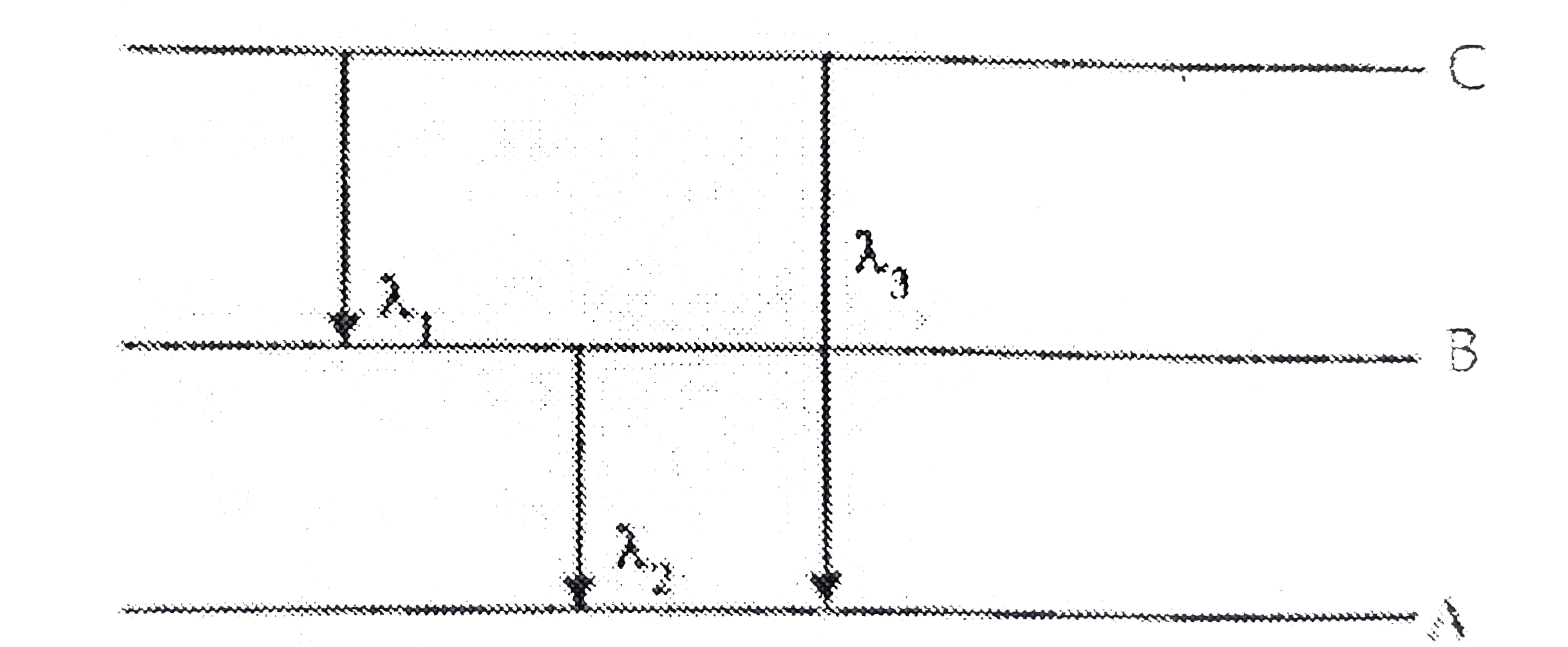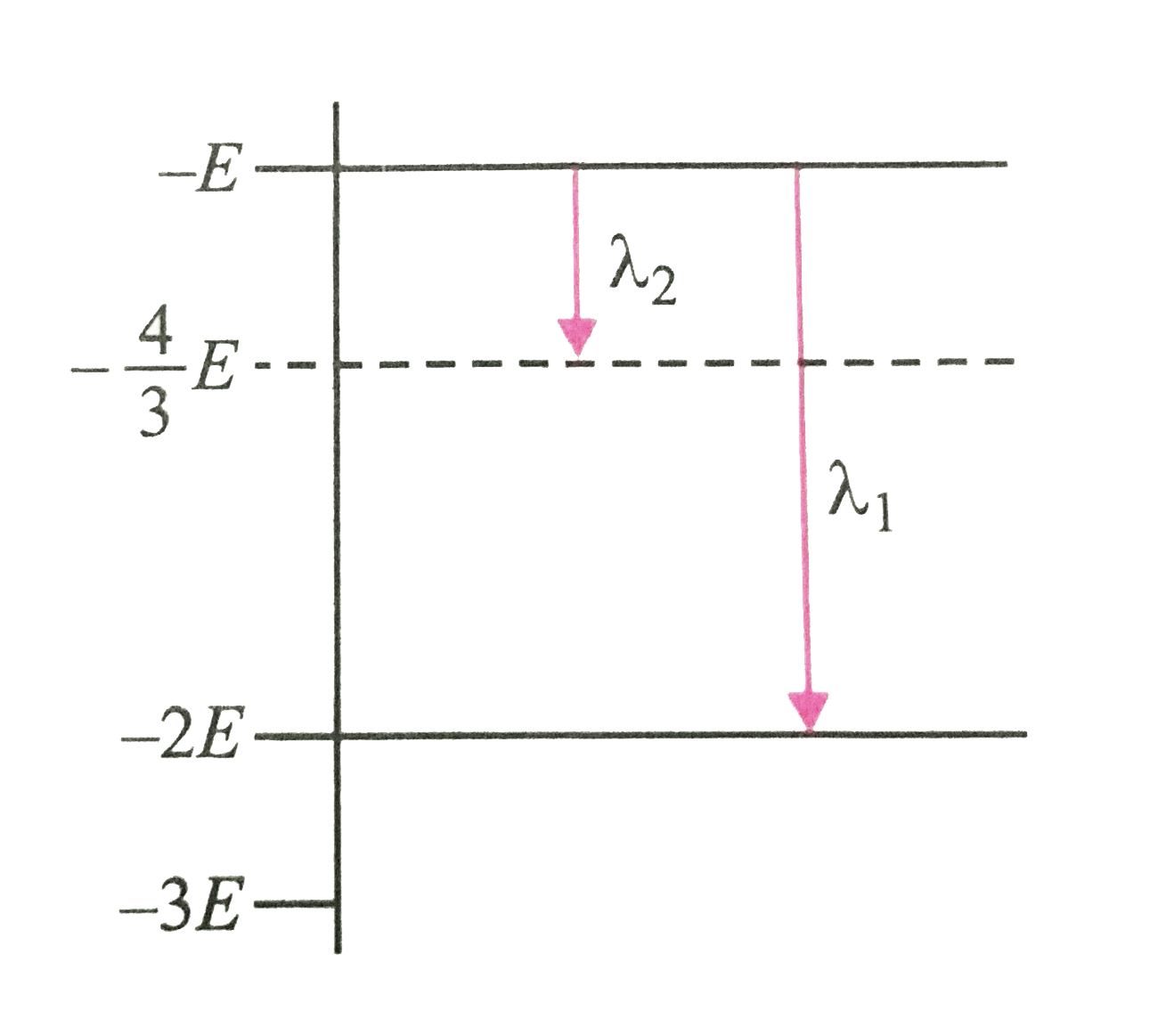(i) State Bohr's quantization condition for defining stationary orbits . How does de- Broglie hypothesis explain the stationary orbits ?
(ii) find the relation beween the three wavelengths
λ1,λ2 and λ3 from the energy level diagram shown :

(i) Electrons can revolve in those stationary orbits in which their angular momentum is integral multiple of h/2π
i.e., mvr =nh/2π
for electron in an atom de-Broglie proposed that wave like nature exist in the form of standing waves i.e., wave is associated with electron moving in a shell only certain discrete frequencise will have a wavelength that will fit exactly around the nucleus i.e.,
2πr=nλ but λ=h/mv
2πr=nhmv
⇒h(h2π)= mvr which is Boh's postulate
(ii) ECA=ECB+EBA , hcλ3=hcλ1+hcλ2
⇒ 1λ3=1λ1+1λ2 ⇒ λ3=λ1.λ2λ1+λ2
Topper's Solved these Questions
- XII BOARDSBook:XII BOARDS PREVIOUS YEARChapter:XII BOARDSExercise:Section-D
Explore 18 Videos
- XII BOARDSBook:XII BOARDS PREVIOUS YEARChapter:XII BOARDSExercise:Section-E
Explore 18 Videos
- XII BOARDSBook:XII BOARDS PREVIOUS YEARChapter:XII BOARDSExercise:Section -B
Explore 12 Videos
- SAMPLE PAPER 2019Book:XII BOARDS PREVIOUS YEARChapter:SAMPLE PAPER 2019Exercise:SECTION D
Explore 6 Videos
Similar Questions
(i) State Bohr's quantisation condition for defining stationary orbits. How does de-Broglie hypothesis explain the stationary orbits ?
(ii) Find the relation between the three wavelengths, λ1,λ2 and λ3 from the energy level diagram shown here.
View Solution(i) State Bohr's quantization condition for defining stationary orbits . How does de- Broglie hypothesis explain the stationary orbits ?
(ii) find the relation beween the three wavelengths
λ1,λ2 and λ3 from the energy level diagram shown :

View Solution
Knowledge Check
Some energy levels of a molecule are shown in the fig. The ratio of the wavelengths r=λ1/λ2, is given by
 Ar=34Br=13Cr=43Dr=23
Ar=34Br=13Cr=43Dr=23Some energy levels of a molecule are shown in the figure. The ratio of the wavelengths r=λ1/λ2 is given by -
 Ar=13Br=43Cr=23Dr=34
Ar=13Br=43Cr=23Dr=34An electron is moving in Bohr's fourth orbit. Its de Broglie wavelength is λ. What is the circumference of the fourth orbit?
A2/λB2λC3λD3/λ
Find the relation between the three wavelengths λ1,λ2andλ3 from the energy level diagram shown below.

View SolutionState Bohr's quantum condition for stationary orbits in terms of de-Broglie wavelength.
View Solution(a) State Bohr's postulate to define stable orbits in hydrogen atom. How does de Broglie's hypothesis explain the stability of these orbits ?
(b) A hydrogen atom initially in the ground state absorbs a photon which excites it to then n = 4 level . Estimate the frequeny of the photon.
View Solution(a) State Bohr's postulate to define stable orbits in hydrogen atom. How does de Broglie's hypothesis explain the stability of these orbits ?
(b) A hydrogen atom initially in the ground state absorbs a photon which excites it to then n = 4 level . Estimate the frequeny of the photon.
View Solution(a) State Bohr's postulate to define stable orbits in hydrogen atom. How does de-Broglie's hypothesis explain the stability of these orbits ?
(b) A hydrogen atom initially in the ground state absorbs a photon which excites it to the p=4 level. Estimale the frequency of the pholon.
View Solution
